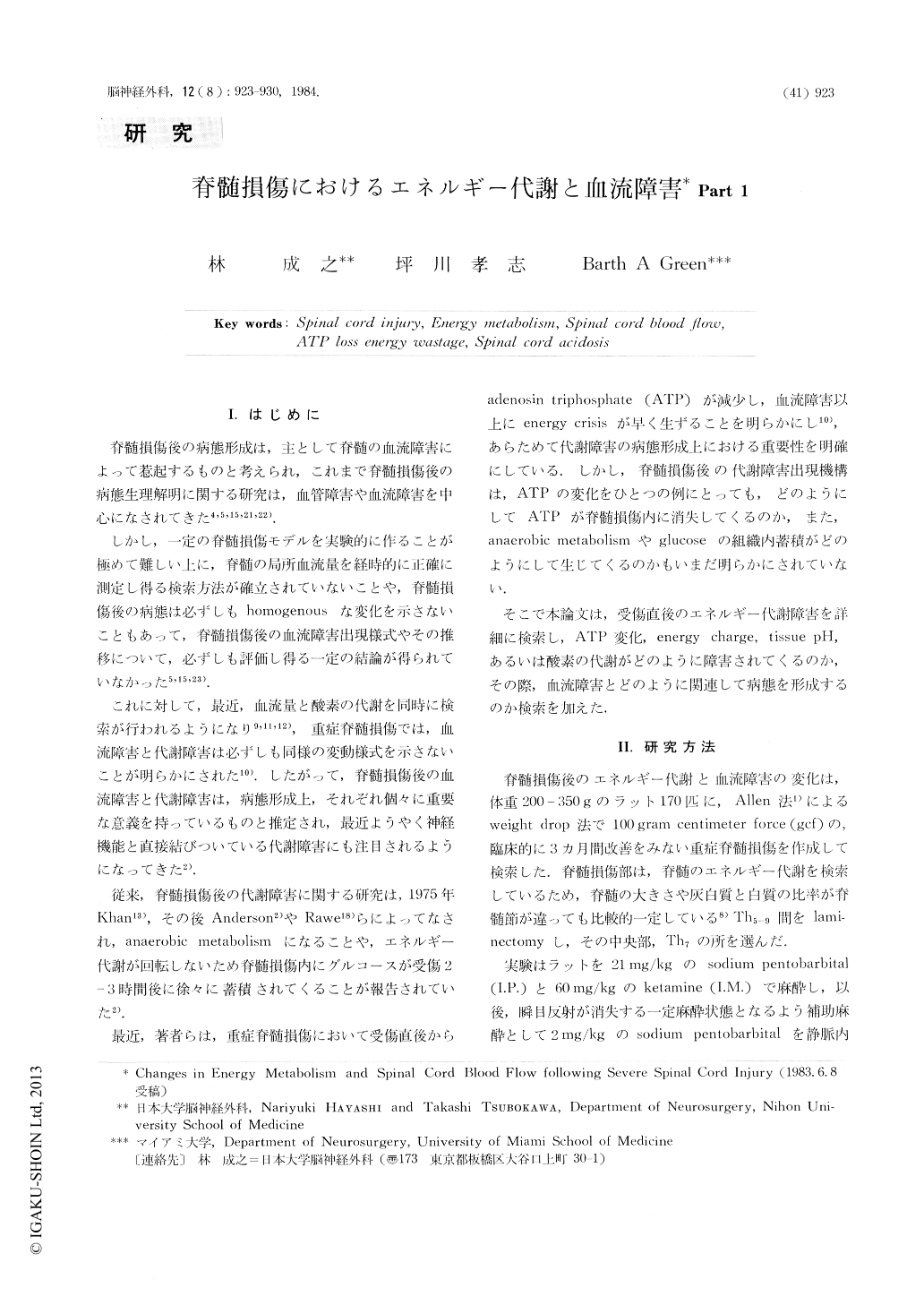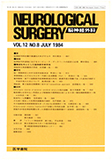Japanese
English
- 有料閲覧
- Abstract 文献概要
- 1ページ目 Look Inside
I.はじめに
脊髄損傷後の病態形成は,主として脊髄の血流障害によって惹起するものと考えられ,これまで脊髄損傷後の病態生理解明に関する研究は,血管障害や血流障害を中心になされてきた4,5,15,21,22).
しかし,一定の脊髄損傷モデルを実験的に作ることが極めて難しい上に,脊髄の局所血流量を経時的に正確に測定し得る検索方法が確立されていないことや,脊髄損傷後の病態は必ずしもhomogenousな変化を示さないこともあって,脊髄損傷後の血流障害出現様式やその推移について,必ずしも評価し得る一定の結論が得られていなかった5,15,23).
Using a rat severe spinal cord injury model, serial determinations of local spinal cord blood flow and energy metabolism including ATP, ADP, AMP, energy charges, local tissue oxygen consumption and changes in pH values in the injured spinal cord tissue were compared topographically. Initially, following injury, energy metabolism was increased with in-creased ATP utilization and within 30 minutes energy metabolites were severley depleted. By 2 hours after spinal cord injury, a state of severe anaerobic metabolism was associated with the depletion of energy metabolites.

Copyright © 1984, Igaku-Shoin Ltd. All rights reserved.


